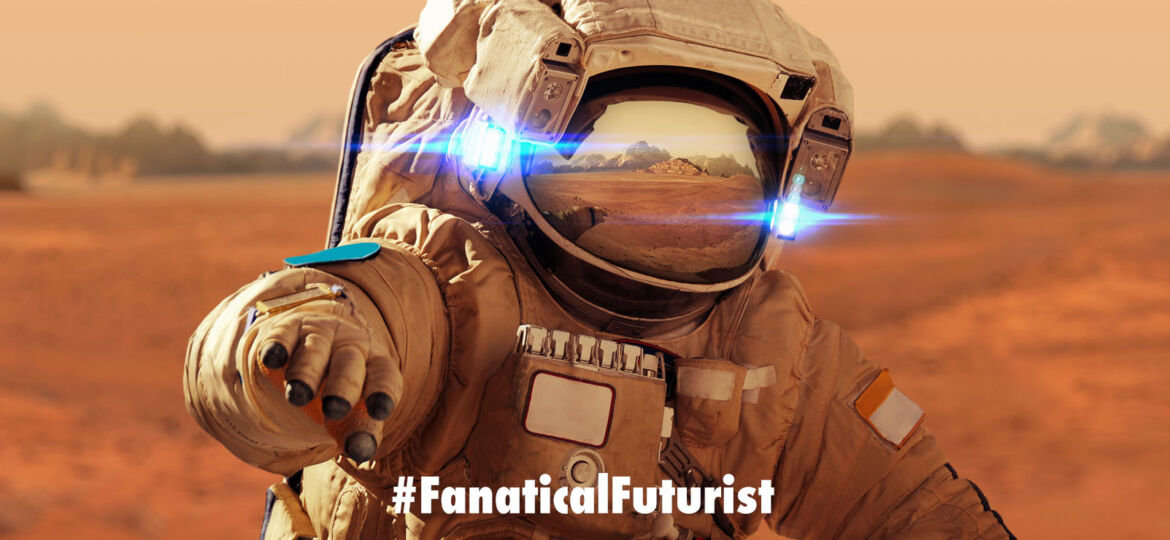
WHY THIS MATTERS IN BRIEF
As odd as this might sound it’s actually a very logical idea when you think about it, and NASA aren’t the first to think about growing homes or cities out of plants.
 Interested in the Exponential Future? Connect, download a free E-Book, watch a keynote, or browse my blog.
Interested in the Exponential Future? Connect, download a free E-Book, watch a keynote, or browse my blog.
A long time ago I wrote about a synthetic biology development that could one day let us grow cities and buildings in the same we grow trees. After all think about it, when you plant a seed it already has all the DNA based programming it needs to grow into a tree shape – you don’t have to lift a finger. Back then scientists in the US had found a way to tweak these instructions to get cells to grow in specific shapes that included everything from squares and hexagons to triangles. And now, in a slight twist NASA wants to use this concept to grow buildings and colonies on Mars and the Moon – buildings that will not only grow themselves, but that will also self-heal and even replicate themselves, something that seems to be a trend recently after another team of researchers recently unveiled biologically inspired self-replicating bricks.
The Myco-Architecture Project (MAP) as it’s known at NASA’s Ames Research Center in Silicon Valley may be in its infancy, but it’s being taken seriously by the space agency which see huge benefits in the approach.
“Right now, traditional habitat designs for Mars are like a turtle – carrying our homes with us on our backs – a reliable plan, but with huge energy costs,” principle investigator Lynn Rothschild explains. “Instead, we can harness mycelia to grow these habitats ourselves when we get there.”
Though a basic lightweight structure is still needed, fungi, which would remain dormant en route to their destination, would be roused with water upon arrival – water that can be extracted from the Moon’s regolith. The fungi would then flesh out what was a mere structure into a functional human habitat.
Not only is the plan to grow homes and buildings, but the furniture and other items inside them too. In an early prototype from 2018, researchers grew a stool from fungi over the course of two weeks. Once the stool had grown sufficiently, it was baked as the final step in creating a clean, dry, functioning and (crucially) dead piece of furniture.
The key to the success of the projects is the fungi’s mycelia – the vegetative part that spreads as a colony of branching threads. Their presence underground is the cause of so-called fairy rings from which the more familiar, visible mushrooms grow. They’re capable of forming complex structures, like the mushrooms themselves, and the team is researching how to harness that complexity to create different materials and structures.
Further, the researchers claim bricks made with mycelia, wood chips and yard waste compare favorable to reinforced concrete when bent and lumber when compressed, and make natural insulators and fire retardants.
The mycelia feed on cyanobacteria which harness the Sun’s energy to convert water and carbon dioxide into oxygen and matter which the fungus can consume.
Ultimately, the researchers envisage a three-tiered dome habitat. The inside layer is grown from mycelia , then baked, just like the prototype stool. The next layer out is made of cyanobacteria, and produces oxygen both from the mycelia, and the human colonists living within. Finally, the outer layer is composed of a renewable layer of ice which protects the building from radiation while providing water to the cyanobacteria layer.
Crucially, the fungi is contained throughout to prevent contamination of the outside environment, though as a precaution, the researchers intend to genetically alter the mycelia to make them incapable of surviving outside.
Though the main goal is viable, liveable living buildings, mycelia has the theoretical potential for those structures to regulate humidity, provide bioluminescent lighting from genetically engineered plants like the ones created by MIT a while ago, and even create buildings that self-heal in the event of damage.
The researchers suggest that the technology may one day provide sustainable, affordable housing on Earth, and if we ever do get to that point then the fungal technology will need to compete with 3D printed buildings – something else that NASA has been toying around with. NASA also goes on to suggest that mycelia could also be harnessed for harvesting minerals from water filtration so that just leaves us with two questions – when can we live in one, and what else can all this magical fungi do!?
















